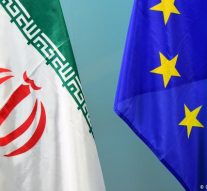
Reconnecting the people of Iran and the EU
Employment and Social Affairs 18 November 2019Iran historically had close ties with the European Union and the United States. Iran is the biggest country that can be associated with the Shia branch of Islam, while most of the other States in the Middle East and Persian Gulf are characterized by Sunnism. Also, this aspect related to religion and culture gave Teheran a crucial role in relations between East and West. In 1970, Iran ratified the Non-Proliferation Treaty, making its nuclear program subject to the IEAS’s verification. But this stance has radically changed after the Iranian Revolution in 1979, the series of events that involved the overthrow of the last monarch of Iran, Mohammad Reza Pahlavi, and the replacement of his government with an Islamic republic under the Grand Ayatollah Ruhollah Khomeini. Starting from that moment many things has changed in the relationship between Teheran, Washington and the EU. And the Iranian nuclear programmes, without democratic practices, became a threat for Western countries and a big hurdle in normal relations. Despite that EU tried to maintain a mediation role between Iran and US, the EU is still Iran’s largest trading partner along with China and United Arab Emirates. But, as of 2019, the Iran–EU trade relations are stained due to the sanctions re-imposed on Iran by the United States after the Washington’s unilateral withdrawal from Joint Comprehensive Plan of Action agreement. The EU has, however, established a special Instrument in Support of Trade Exchanges to enable EU–Iran trade bypassing the US sanctions. In the last few months tensions between Iran and the United States have risen to a dangerous new level. In May 2018, in fact, U.S. President Donald Trump formally pulled the United States out of the nuclear deal that was struck between Iran and world powers in July 2015. Following Trump’s decision, in January 2019, France, Germany and Britain introduced an Instrument in Support of Trade Exchanges (INSTEX) which was meant to facilitate legitimate trade between European economic operators and Iran in order to convince Iran to stay in the 2015 nuclear deal. But according to the latest data provided by the statistical office of the European Union, Eurostat, the trade between Iran and the EU nations has decreased by 75 percent compared to last year’s same period in which the figure stood at 14.292 billion euro. As reported, EU’s exports to Iran plunged nearly 50 percent in the mentioned period compared to the figure for last year’s same time span. EU countries exported 2.994 billion euro of goods to Iran in the said time, while the figure stood at 6.198 billion euro in the last year’s first eight months. EU’s imports from Iran in the same eight-month period also fell by 94 percent compared to the previous year, falling to 477 million euro. The EU imported 8.094 billion euros worth of goods from Iran in the first eight months of last year. According to the European Union’s statistics agency, the trade between Iran and the EU stood at 2.56 billion euro during the first half of 2019. The figure shows 76 percent decrease from 10.67 billion euro in the first half of 2018.
European countries, for many aspects, should preserve their mediation role and should attempt to convince both sides (Iran and US) that now is the time to use this leverage in negotiations rather than provoke each other further. It is right what has done the European Parliament in September 2019, adopting a resolution condemning the Islamic Republic’s human rights record and to call Teheran to end “suppression of women” in the country. And that members of the European Parliament demanded all EU countries with a diplomatic presence in Iran to use all the diplomacy tools in their power to support and protect human rights defenders on the ground. MEPs also called on the Iranian authorities to immediately release all human rights defenders and journalists detained and sentenced merely for exercising their right to freedom of expression and peaceful assembly. On the other hand, the EU should try not to break up ties with Iran. The EU has no Delegation in Iran but works in close collaboration with the EU member states’ embassies in Tehran. Reconnecting the people of Iran and the EU through education, tourism and cultural exchanges will help both sides understand each other better, even in this difficult period. Both Iran and Europe have rich cultures and cultural heritage which make them important to the global tourism industry. And thematic programmes, as Erasmus Mundus, provides annual funding opportunities, enabling between 30-50 Iranian university and post-graduate students to study in European countries. But nowadays given the issue over the Teheran’s nuclear programme, the EU’s scope for cooperation with Iran is limited. Assistance is provided directly to the Iranian society; through a portfolio of projects implemented by local or European civil society organisations. These actions are funded under the EU instrument for non-state actors and, to a lesser extent, the corresponding instrument for human rights and democracy.


